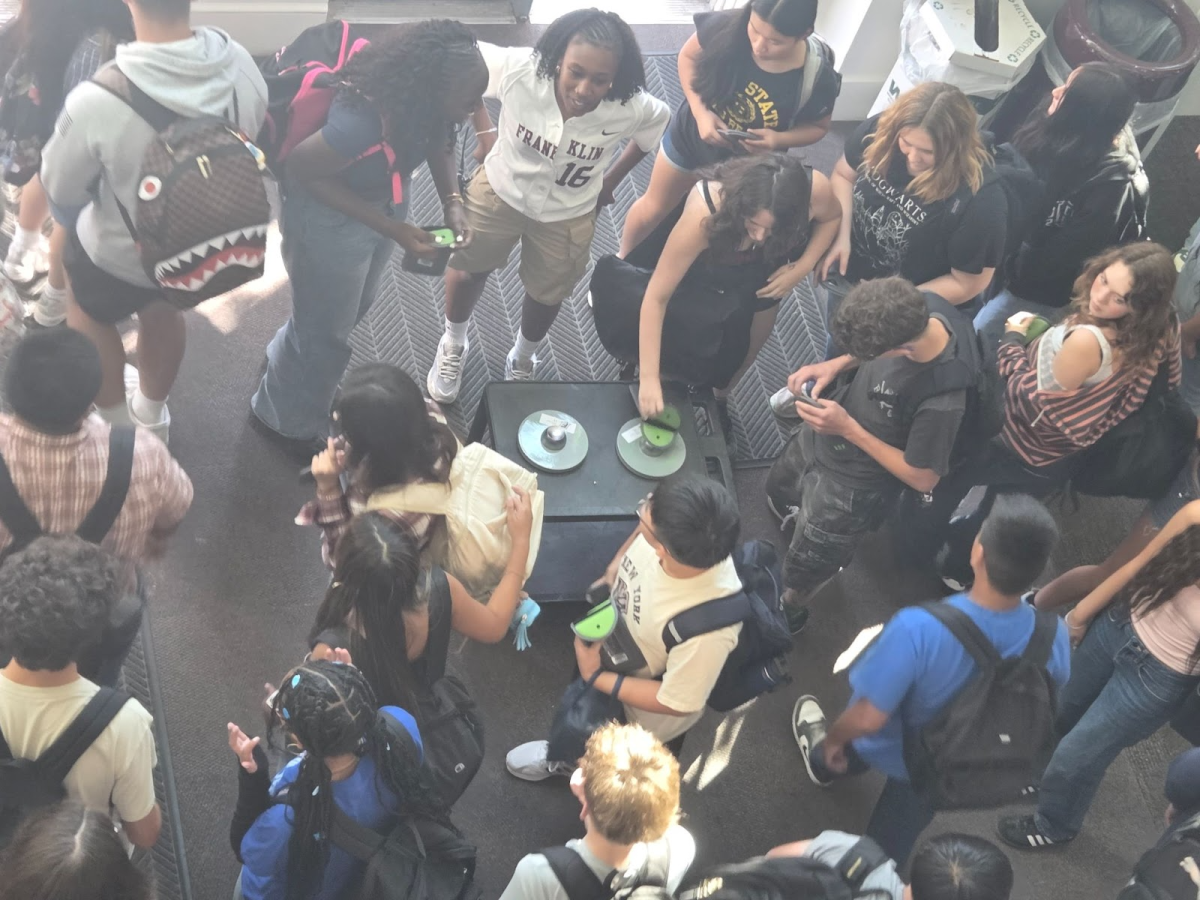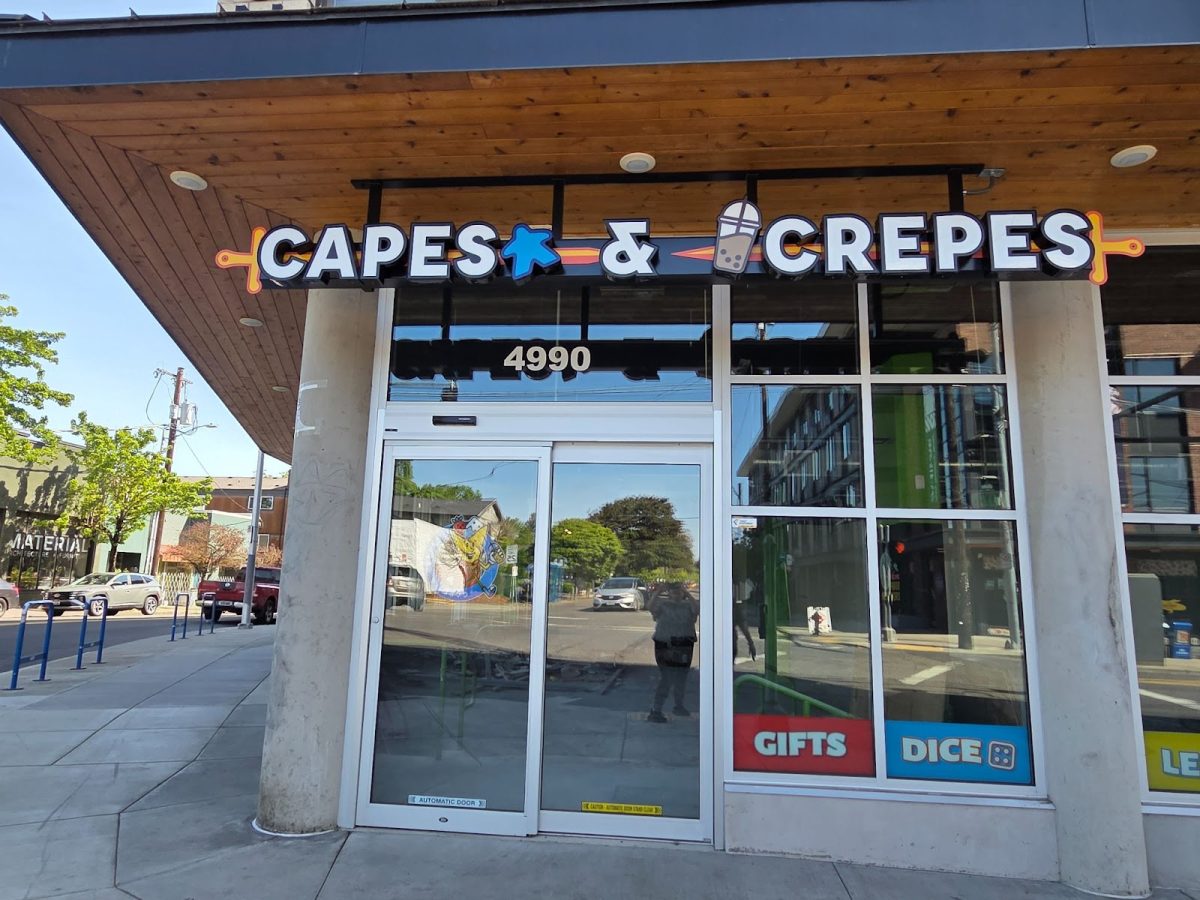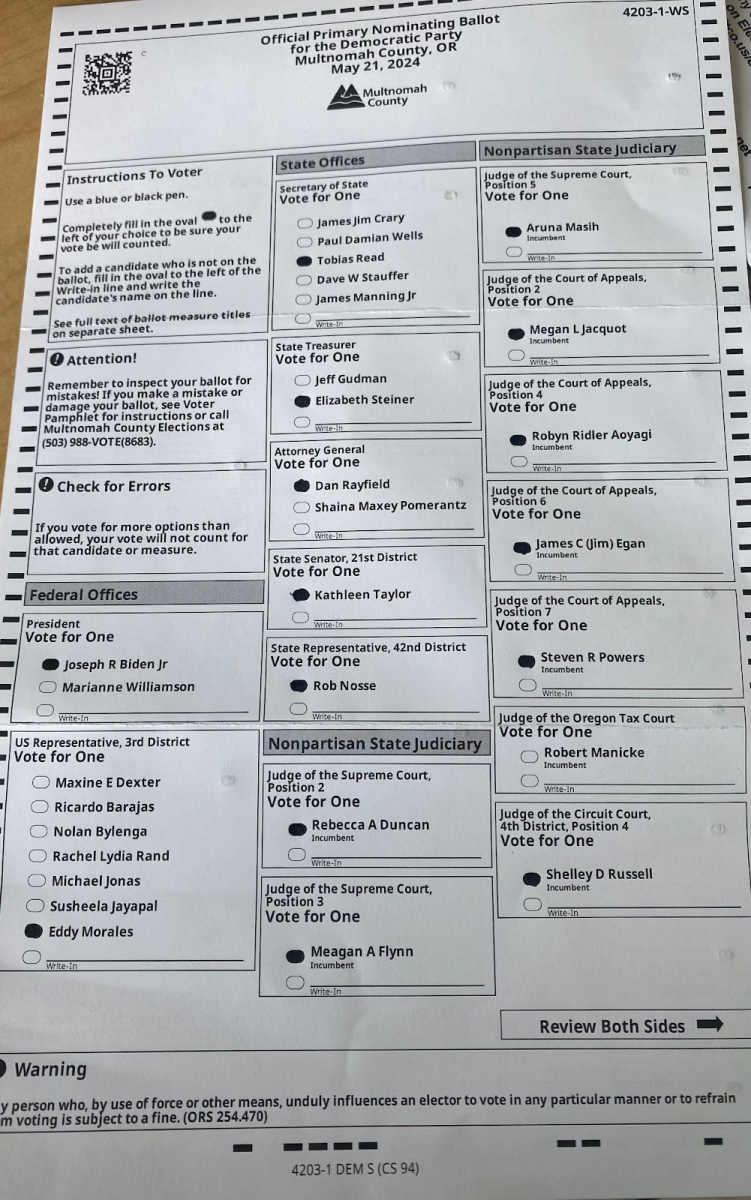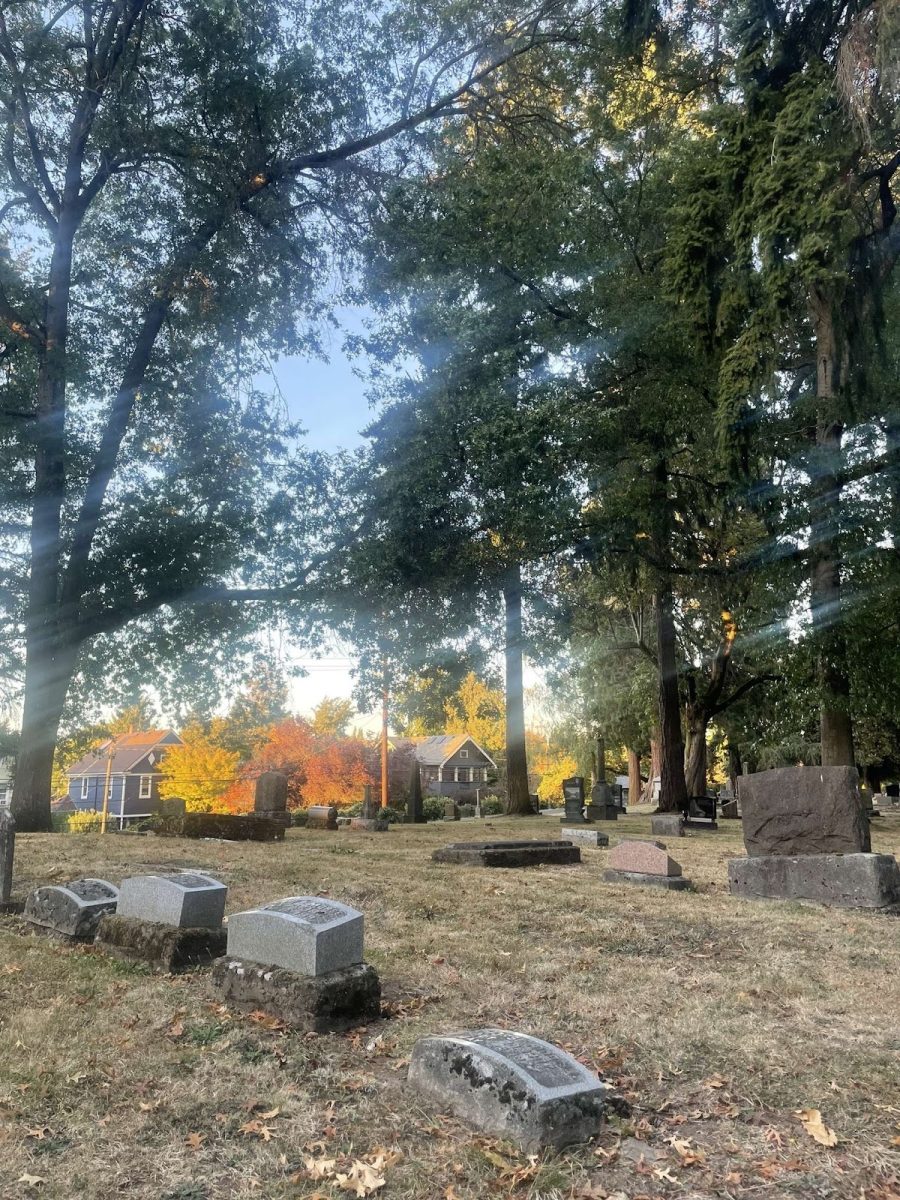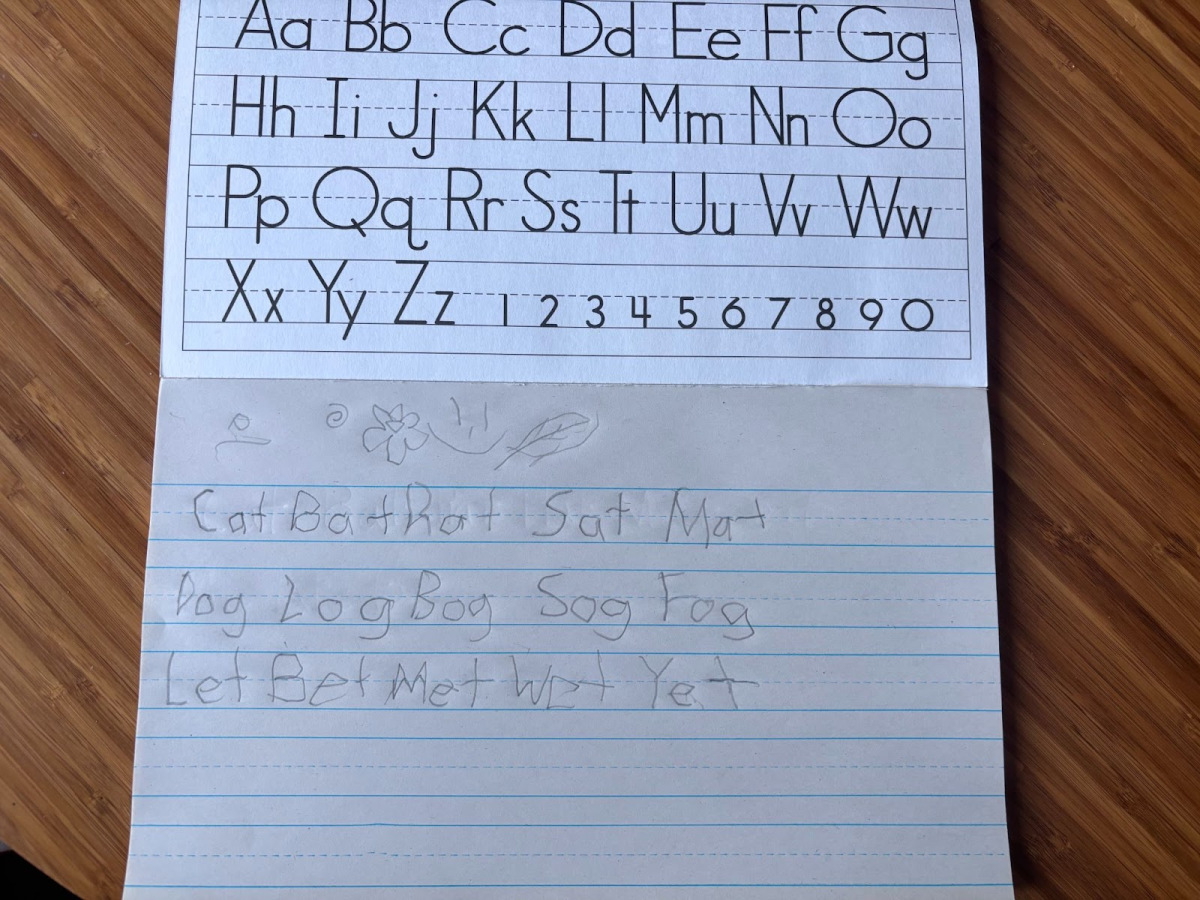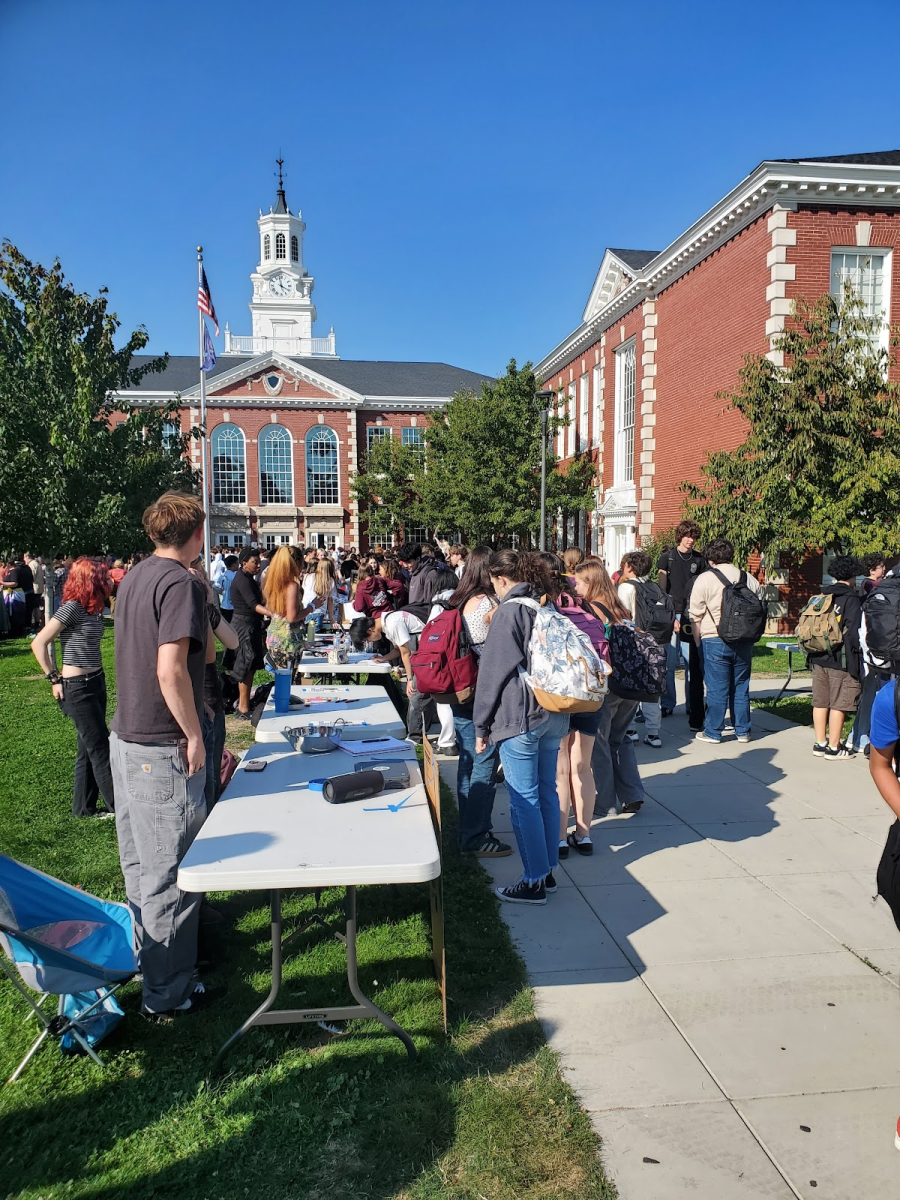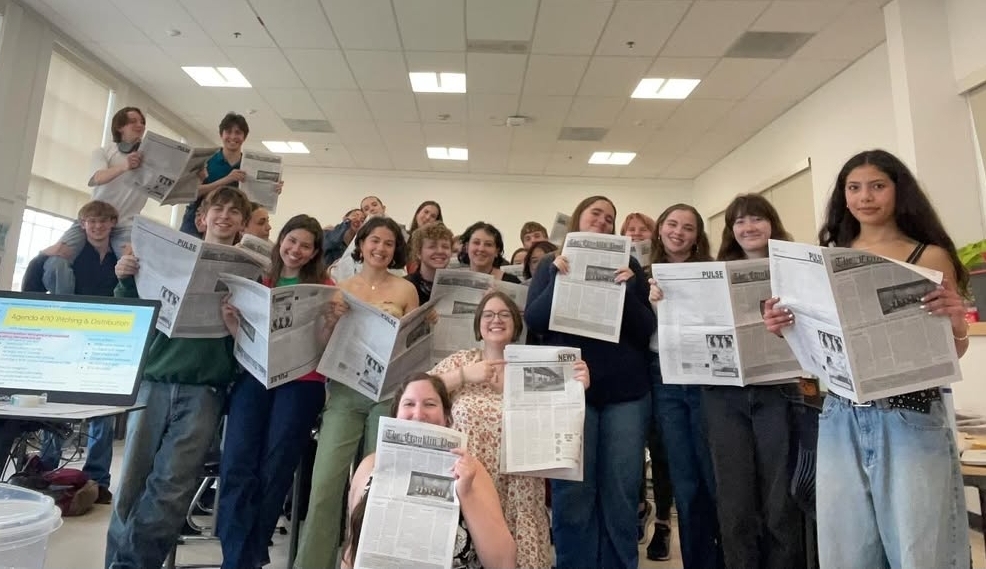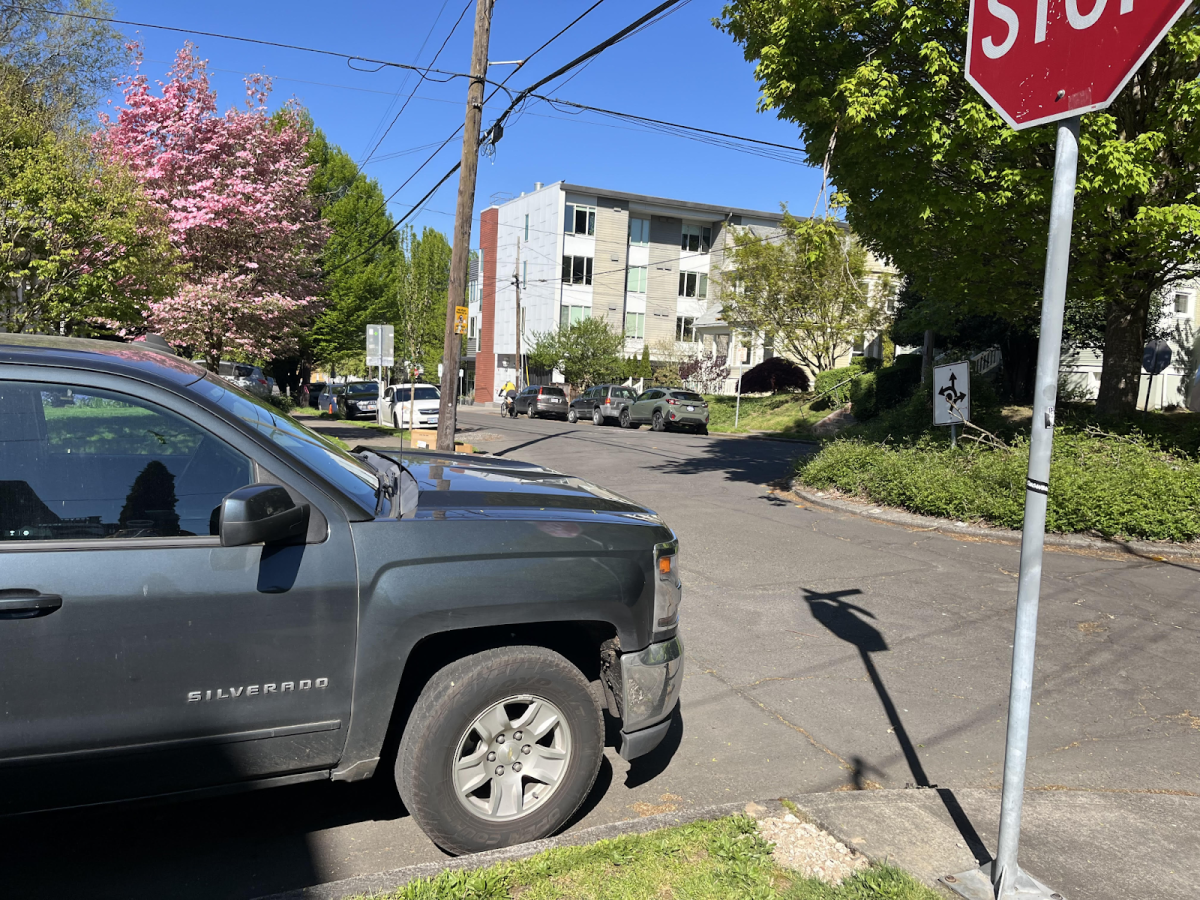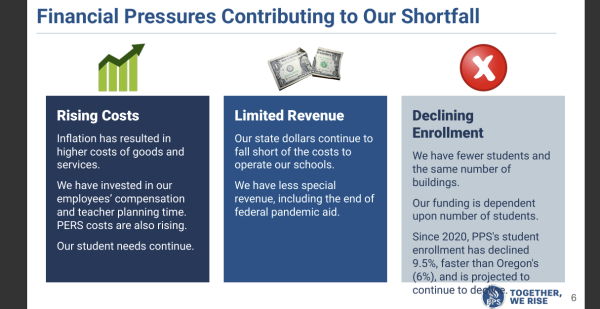
On Jan. 22, 2025, Portland Public Schools (PPS) announced the proposed budget for the upcoming 2025-26 school year. The budget will cut roughly $41 million from the general fund and could result in the loss of up to 228 positions district wide. According to the Oregonian, during the 2024-25 school year PPS operated on an $853 million general fund budget and employed an estimated 8,700 employees, meaning that “the proposed cuts equate to about 2.6% of the district’s workforce and 4.8% of its current operating budget.”
PPS’ Chief Financial Officer, Michelle Morrison, spearheaded a majority of the budget process this year after being appointed to the position on Jan. 6, 2025. She explains that “the Finance Office prepares the budget according to local budget law, and accounts/reports on actual transactions including payroll, grant administration, banking, debt management, contracts, and purchasing.” Morrison emphasized that this is a robust and multi-phase process that involves many staff members as well as community interaction.
The projected budget cuts for the 2025-26 school year are not the first significant cuts the district has faced in recent years. The 2024-25 budget came with $30 million in reductions, half from central office services and outside contracts and the other half in schools. For 2025-26, an additional $41 million in reductions is needed, which will impact both school and district-level budgets.
Morrison explains that, “Moving into 2025-26, more of the reductions are impacting schools due to enrollment declines and supplemental (non-required) service reductions.” This is emphasized on the district website which explains that the deficit is driven by three main factors: rising costs, limited funding, and declining enrollment. PPS states that they are “committed to prioritizing students, educators, and quality education while making strategic budget adjustments.”
While inflation and declining enrollment numbers are driving forces in the impending budget cuts, one of the most significant factors is funding from the state. The PPS website asserts: “Oregon’s school funding has not kept up with the rising costs of operating our schools, and [the fact that] federal pandemic relief funds have ended.” In an interview with OPB, PPS Superintendent Dr. Kimberlee Armstrong states, “We know what needs to be done to advance our learners, and we don’t have enough resources.” Morrison also stressed that “this spring is the full legislative session [which] will set the level of school funding for the next two years,” and she believes “advocacy is critical!”
According to OPB, last year Franklin faced the greatest impact from cuts, with roughly ten full time positions being cut, largely due to an expected decline in enrollment of 84 students. Mikey Corenthal, a social studies teacher, who was one of the ten staff members cut last year, explains, “I think the biggest impact was the loss of community for me. I had deep roots and relationships at Franklin after being there for eight years.”
Corenthal now works at McDaniel High School and explains that he feels grateful to have landed in a great community. Corenthal shares, “I just feel for people who need to go through this. It stinks.” He then shared an important reminder: “the [budget] process can make educators feel expendable and they need to remember that they’re not.”
The lengthy budget creation process begins in November of each year. During a board meeting, the budget calendar is approved and the board appoints the Community Budget Review Committee. In December they establish priorities and forecasts as well as accept the Annual Comprehensive Financial Report from the state. Finally, at the beginning of the year, the district receives enrollment projections from Portland State University. “Leadership then begins the process of identifying areas that may be reduced with a goal of protecting the student experience and the classroom as much as possible,” explains Morrison.
Once the budget proposal is announced, the district holds budget work sessions throughout the remainder of the school year, until finally voting to approve and adopt the budget in early June. This gives ample time and opportunity for the department and school administrators to collaborate and get feedback from the community before the budget is finalized. Morrison shares that throughout the entirety of the process, “the public can view public meeting agendas and budget updates on the school board website.”
Corenthal believes that the effects of budget cuts should motivate students to continue to engage and develop their skills instead of the opposite. He advised students to not let “people who want to disinvest from community education win by checking out of their own education.” He continues on to say, “students must remember that the school is there to serve them. There is power in students’ collective voice to advocate for the education they want.” With this in mind, Franklin Principal Dr. Zulema Naegele explains, “We are taking into serious consideration how the proposed budget for next year may impact our teachers, staff, and students.”
As the budget process continues, Morrison explains that “more detailed information [will be] shared with school administrators during the staffing process in late February/March.” Once the site specific cuts are determined, administrators can more accurately determine how greatly their school will be impacted. Morrison adds, “Although the appropriation levels are set when the budget is adopted in June, adjustments [will] occur throughout the year as needed.”



